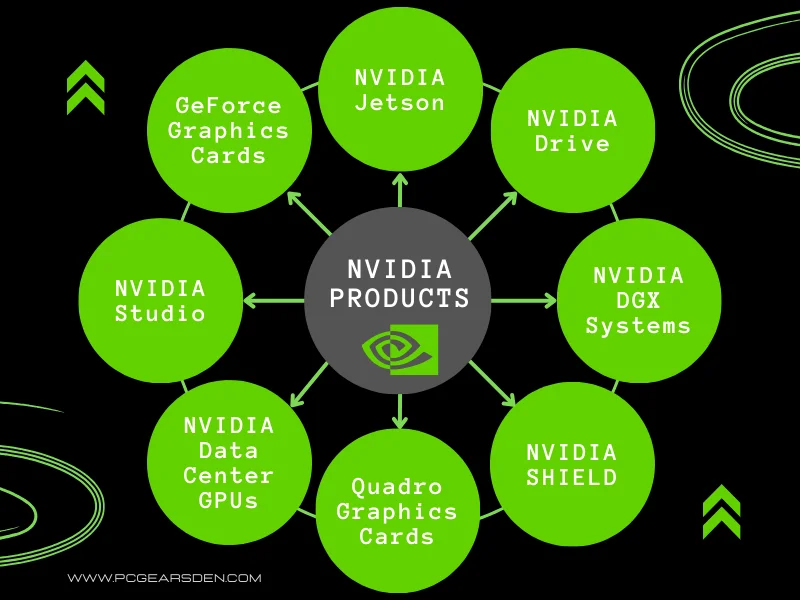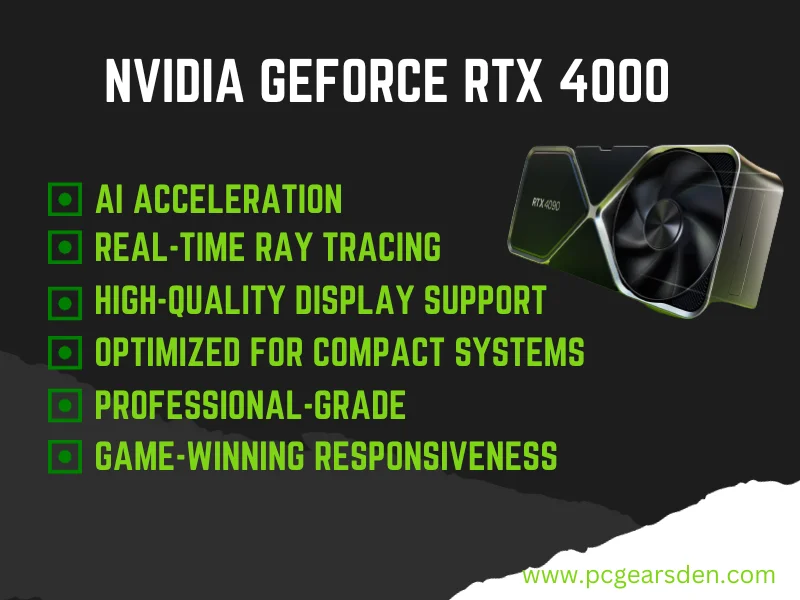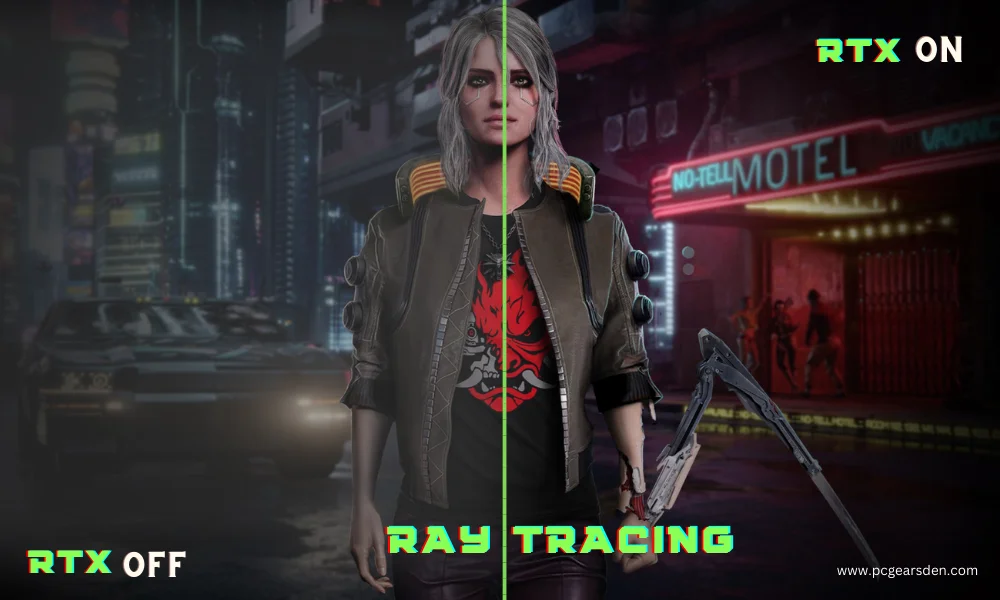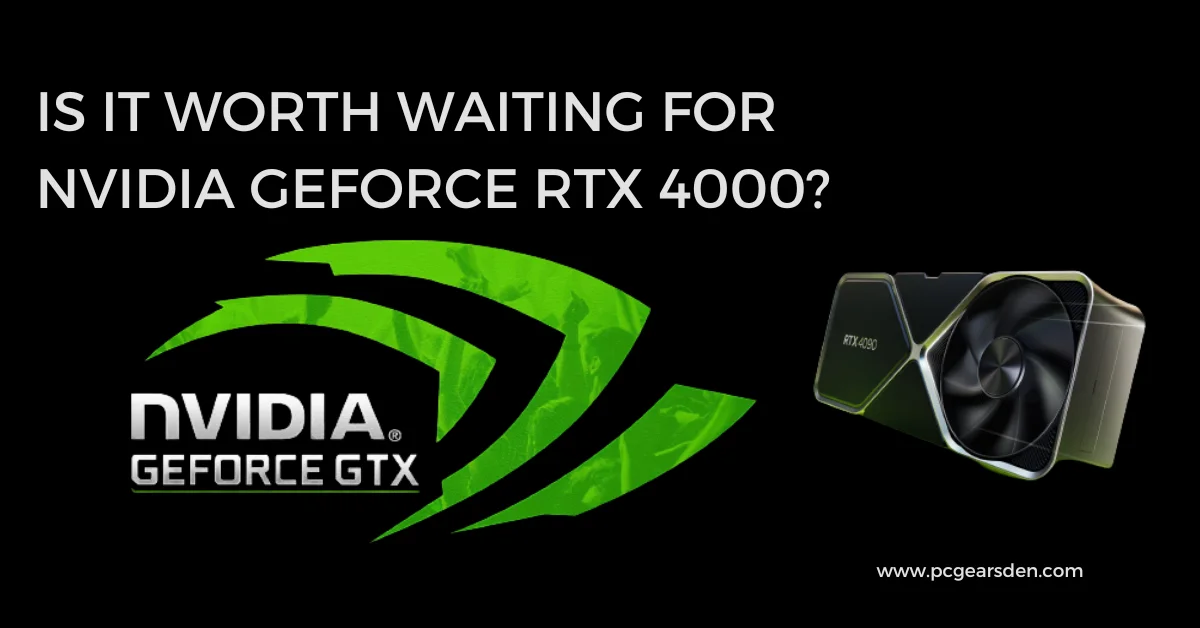There is no denying that a lot of us have been waiting for the Nvidia GeForce RTX 4000 series. In the fast-paced world of gaming and graphics cards, Nvidia has consistently been a leading player, with their GeForce RTX series standing at the forefront of innovation. Gamers and tech enthusiasts are always eager to get their hands on the latest and greatest GPUs, and the anticipation for Nvidia’s GeForce RTX 4000 series is no exception.
But is it really worth the wait? In this article, we’ll delve into the world of Nvidia’s graphics cards, explore the possibilities of the RTX 4000 series, and help you decide whether you should hold out for the next big thing or dive into the gaming action now.
Understanding Nvidia’s Evolution
NVIDIA has undergone a significant evolution from its origins as a gaming-focused company to becoming a prominent player in artificial intelligence (AI) and GPU computing.
NVIDIA started as a gaming-oriented company, known for its graphics processing units (GPUs) that enhanced gaming graphics and performance. The company made a strategic shift towards AI, leveraging its GPU technology for deep learning and AI applications. This transition led to the development of GPUs capable of accelerating AI workloads.
NVIDIA’s GPUs are now extensively used in data centers for AI and machine learning tasks. They are integral to training and running AI models. NVIDIA has made strategic acquisitions to expand its capabilities in AI, including the purchase of companies like Mellanox, which specializes in high-performance networking technology.
NVIDIA offers a wide range of products, from gaming GPUs to professional-grade GPUs like the Quadro and Tesla series, tailored for AI and scientific computing.

NVIDIA’s Older GPUs
Before the era of NVIDIA’s RTX 4000 series GPUs, the company had a rich history of producing innovative graphics cards. Transitioning through several generations, NVIDIA continually pushed the boundaries of GPU technology.
First, in the early days, NVIDIA introduced the GeForce 256, which marked a monumental leap forward in GPU development. Following that, the GeForce 4000 series in 2010 brought significant updates, including enhanced performance and capabilities.
Moving on, the Kepler architecture, introduced with the GeForce 600 series, aimed to improve performance per watt while maintaining a focus on graphics processing power. The Maxwell architecture in the GeForce 900 series continued this trend, emphasizing energy efficiency and superior performance.
NVIDIA then entered the Pascal era, featuring GPUs like the GTX 10 series, which offered remarkable gaming performance. With Turing, introduced in the GeForce 20 series, ray tracing and AI capabilities became pivotal, setting the stage for the RTX series.
Here is a list of most common NVIDIA’s GPUs:
| GPU Model | Architecture | CUDA Cores | Base Clock (MHz) | Boost Clock (MHz) | Memory Type | Memory Capacity (GB) | TDP (Watts) |
|---|---|---|---|---|---|---|---|
| NVIDIA RTX 3090 | Ampere | 10,496 | 1,400 | 1,700 | GDDR6X | 24 | 350 |
| NVIDIA RTX 3080 | Ampere | 8,704 | 1,440 | 1,710 | GDDR6X | 10 | 320 |
| NVIDIA RTX 3070 | Ampere | 5,888 | 1,500 | 1,725 | GDDR6 | 8 | 220 |
| NVIDIA GTX 1660 Ti | Turing | 1,536 | 1,500 | 1,770 | GDDR6 | 6 | 120 |
NVIDIA GeForce RTX 4000
The NVIDIA GeForce RTX 4000, as a part of the Ada Generation, signifies a major leap in GPU technology. With a focus on professionals, this single-slot GPU brings groundbreaking advancements in terms of speed and power efficiency.
Transitioning from previous generations, the RTX 4000 offers real-time ray tracing, which has become a hallmark of NVIDIA’s GPUs. This technology, combined with AI-accelerated compute capabilities, unlocks new frontiers in rendering and computation tasks.
The shift to the RTX 4000 series is part of NVIDIA’s continuous innovation, building upon the foundation laid by previous GPUs like the Quadro RTX 4000, known for its versatility in AI and professional applications.
Looking ahead, NVIDIA’s plans to further hype up its next-gen GPUs indicate an ongoing commitment to pushing the boundaries of graphics processing. Rumors about the Ada Lovelace architecture suggest a promising future with potentially significant performance boosts.

What To Expect From NVIDIA GeForce RTX 4000
The NVIDIA GeForce RTX 4000 series, is poised to bring a host of exciting enhancements to the gaming and professional computing worlds. Building upon the success of the previous RTX generations, the RTX 4000 series is expected to deliver significant improvements in performance and visual fidelity. These GPUs are designed to cater to the demands of both gamers and professionals, setting new standards in the world of graphics cards.
Moreover, utilizing NVIDIA’s latest Ampere architecture, these GPUs will offer more CUDA cores and enhanced clock speeds. Gamers can anticipate a smoother and more immersive gaming experience, while professionals will benefit from quicker rendering and accelerated workloads.
In addition to raw performance, the RTX 4000 series is likely to further advance ray tracing and AI technologies. Real-time ray tracing has become a hallmark of NVIDIA’s RTX cards. With better ray tracing capabilities, games will look even more realistic, with stunning lighting and reflections. AI-driven features like DLSS (Deep Learning Super Sampling) are also poised for refinement, enhancing image quality and frame rates simultaneously.
Furthermore, these GPUs are likely to come equipped with generous VRAM configurations to meet the needs of modern games and content creation applications. Higher VRAM ensures smoother multitasking and rendering, particularly for professionals working on complex 3D models, animations, or video editing projects.
NVIDIA’s commitment to advanced cooling solutions should persist in the RTX 4000 series, ensuring that these GPUs run efficiently and quietly, even under heavy workloads. Enhanced thermal management is crucial to maintaining peak performance and preventing overheating.
The RTX 4000 series is also expected to support the latest connectivity standards, such as HDMI 2.1 and DisplayPort 2.0, enabling high-refresh-rate 4K and 8K displays. These GPUs will cater to those seeking cutting-edge visuals and immersive experiences.

RTX 4000 Is Worth An Upgrade?
Upgrading to the NVIDIA GeForce RTX 4000 series is a topic that hinges on several factors. It’s essential to consider the current state of your graphics card, your specific needs, and the relative performance improvements offered by the new series.
First and foremost, if you own an older GPU, upgrading to the RTX 4000 series can be a significant leap in terms of performance and features. These GPUs are designed to deliver exceptional gaming experiences, with the latest ray tracing capabilities and AI-driven technologies. For gamers with older GPUs, this upgrade may be well worth it, especially if you’re seeking to enjoy modern titles at higher resolutions and frame rates.
However, if you already own a high-end GPU from a recent generation, the value of upgrading becomes more nuanced. The RTX 4000 series is undoubtedly powerful, but the benefits may not be as pronounced compared to the cost. In such cases, it’s essential to assess whether the improved performance and features align with your specific gaming or professional needs.
Moreover, professionals working with graphics-intensive tasks, such as 3D rendering, video editing, or machine learning, may find substantial advantages in the RTX 4000 series due to its enhanced computational capabilities. For these users, the upgrade can translate into higher productivity and quicker project completion.
Budget considerations also play a crucial role. The RTX 4000 series GPUs are positioned as high-end, which means they come with a premium price tag. It’s important to weigh the performance gains against your budget and evaluate whether the cost justifies the benefits you’ll receive.
Nvidia GeForce RTX 4000 Series Specifications
The Nvidia GeForce RTX 4000 Series, built on the Ada generation architecture, brings significant improvements over its predecessors. Here’s a list of important specifications for all 4000 models:
| GPU Names | GeForce RTX 4090 | GeForce RTX 4080 | GeForce RTX 4070 | GeForce RTX 4060 |
|---|---|---|---|---|
| Architecture | Ada (TSMC N4) | Ada (TSMC N4) | Ada (TSMC N4) | Ada Lovelace |
| CUDA Cores | 16128 | 14,080 | 7680 | 3072 |
| Memory | 24GB GDDR6X | 16GB GDDR6X | 12GB GDDR6/GDDR6X | 8GB GDDR6 RAM |
| Memory Bus | 384-bit | 256-bit | 192-bit | 128-bit |
| Memory Speed | 21 Gbps | 36 Gbps | 18 Gbps+ | 17 Gbps+ |
| Power Draw/TDP | 450W | 400W | 300W+ | 160W |
| Price | $1599.00 | $1199.00 | $599.00 | $299.00 |
Our Verdict
The Nvidia GeForce 4000 Series has generated considerable excitement and anticipation in the gaming and graphics card community. With advancements in the Ada architecture, these GPUs are expected to offer substantial improvements in performance, particularly in the areas of ray tracing and AI-related tasks. While the specific details and benchmarks may vary between models, the series as a whole represents a significant leap forward in graphics card technology.
Hence enthusiasts and gamers can look forward to enhanced gaming experiences, higher resolutions, and smoother frame rates. Nvidia’s commitment to pushing the boundaries of what’s possible in the world of gaming and content creation makes the GeForce 4000 Series a highly promising and eagerly awaited addition to their product lineup.
FAQs
- What is ray tracing, and how do Nvidia GeForce RTX GPUs enhance gaming with it?
- Ray tracing is a rendering technique that simulates the behavior of light, creating incredibly realistic lighting, shadows, and reflections in games. Nvidia GeForce RTX GPUs feature dedicated ray-tracing cores, enabling real-time ray tracing for a more immersive gaming experience.
- What are DLSS and Reflex, and how do they improve gaming performance and responsiveness?
- DLSS (Deep Learning Super Sampling) uses AI to upscale lower-resolution images, delivering better performance while maintaining image quality. Reflex reduces system latency, providing quicker response times in competitive gaming, giving players an edge.
- Are Nvidia GeForce RTX GPUs suitable for content creation and professional workloads?
- Yes, Nvidia GeForce RTX GPUs are versatile and excel in content creation tasks. Their Tensor Cores and CUDA cores accelerate AI and rendering workloads, making them ideal for tasks like video editing, 3D modeling, and more.
